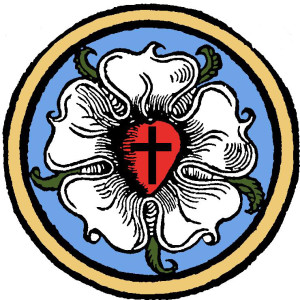
- Podcast Features
-
Monetization
-
Ads Marketplace
Join Ads Marketplace to earn through podcast sponsorships.
-
PodAds
Manage your ads with dynamic ad insertion capability.
-
Apple Podcasts Subscriptions Integration
Monetize with Apple Podcasts Subscriptions via Podbean.
-
Live Streaming
Earn rewards and recurring income from Fan Club membership.
-
Ads Marketplace
- Podbean App
-
Help and Support
-
Help Center
Get the answers and support you need.
-
Podbean Academy
Resources and guides to launch, grow, and monetize podcast.
-
Podbean Blog
Stay updated with the latest podcasting tips and trends.
-
What’s New
Check out our newest and recently released features!
-
Podcasting Smarter
Podcast interviews, best practices, and helpful tips.
-
Help Center
-
Popular Topics
-
How to Start a Podcast
The step-by-step guide to start your own podcast.
-
How to Start a Live Podcast
Create the best live podcast and engage your audience.
-
How to Monetize a Podcast
Tips on making the decision to monetize your podcast.
-
How to Promote Your Podcast
The best ways to get more eyes and ears on your podcast.
-
Podcast Advertising 101
Everything you need to know about podcast advertising.
-
Mobile Podcast Recording Guide
The ultimate guide to recording a podcast on your phone.
-
How to Use Group Recording
Steps to set up and use group recording in the Podbean app.
-
How to Start a Podcast
-
Podcasting
- Podcast Features
-
Monetization
-
Ads Marketplace
Join Ads Marketplace to earn through podcast sponsorships.
-
PodAds
Manage your ads with dynamic ad insertion capability.
-
Apple Podcasts Subscriptions Integration
Monetize with Apple Podcasts Subscriptions via Podbean.
-
Live Streaming
Earn rewards and recurring income from Fan Club membership.
-
Ads Marketplace
- Podbean App
- Advertisers
- Enterprise
- Pricing
-
Resources
-
Help and Support
-
Help Center
Get the answers and support you need.
-
Podbean Academy
Resources and guides to launch, grow, and monetize podcast.
-
Podbean Blog
Stay updated with the latest podcasting tips and trends.
-
What’s New
Check out our newest and recently released features!
-
Podcasting Smarter
Podcast interviews, best practices, and helpful tips.
-
Help Center
-
Popular Topics
-
How to Start a Podcast
The step-by-step guide to start your own podcast.
-
How to Start a Live Podcast
Create the best live podcast and engage your audience.
-
How to Monetize a Podcast
Tips on making the decision to monetize your podcast.
-
How to Promote Your Podcast
The best ways to get more eyes and ears on your podcast.
-
Podcast Advertising 101
Everything you need to know about podcast advertising.
-
Mobile Podcast Recording Guide
The ultimate guide to recording a podcast on your phone.
-
How to Use Group Recording
Steps to set up and use group recording in the Podbean app.
-
How to Start a Podcast
-
Help and Support
- Discover

Last week, we looked especially at John 1:1-18, the prologue to John’s Gospel, and then other passages in his writings that refer to two key ideas that he presented, as God inspired him to write: 1) God the Son existed from all eternity as the second person of the one true Triune God, as God the Son, and was involved in the Creation and in other activity of the Triune God in the Old Testament; 2) according to God’s plan, God the Son eventually took on human flesh and became a real human male, in the miracle of Christmas - the incarnation - while still being God, in order to rescue us sinful human beings.
John gives us very little information on just how Christmas happened - how God the Son became man - and he does not explain a lot about why Christmas had to happen as it did. Today we will look at other Scriptures scattered through the Old and New Testament which help us understand more about the "why." Then we will get into the details of the real Christmas story itself as told us by God, through Matthew and Luke, in coming weeks. We will go through a lot of short Bible passages. Look up as many as you can, as we go along.
Look first at Romans 9:4-5. Paul speaks of his own fellow Israelites. “From their own (Jewish) race, according to the flesh, the Christ (the promised Messiah) who is God over all” would come, Paul says. He is thinking, for example, of the key Scripture, when God called Abram (later called Abraham) and promised, “In your seed (a particular offspring) all the families of the earth shall be blessed.” This is said in Genesis 12:3 and repeated in Genesis 22:18 and 28:14. A particular Jewish man would come from the line of Abraham, who would be a blessing to everyone in the world.
Paul also adds that this real man would also be “God over all," just as we heard John say last week. In Galatians 3:7-9,13-14, Paul quotes this Genesis prophecy and applies it directly to Jesus, who would bring these blessings to Gentiles (non-Jews), too, by being hung on the tree of the cross, as “a curse for us," in our place. Think about it. How could Jesus “redeem” the world in this way, unless He was a real Jewish man, who had a body that could be hung on the cross and die?
(We could spend weeks and weeks just looking at many prophecies of the coming Savior, but do not have time in this study to do that. We will focus on just a few this week, related to the New Testament Scriptures I’ll mention, and we will look at more that are specifically referred to when we get into Matthew and Luke.)
Go back then to Romans 5:12, where Paul reminds us of Genesis 3, where “sin came into the world through one man,” Adam, and his wife, Eve, “and death through sin," and then, as the Old Testament goes on, “death spread to all men because all sinned.” (See Genesis 6:5 and Psalm 14:1-3 and Romans 6:23, for example.) The first Adam was created perfect and yet failed miserably and brought sin and death into all the world. He is then called, in Romans 5:14, “a type of the One who was to come."
A second Adam had to come, a real man like Adam, but who would live perfectly and not sin, even when great temptations continually came to Him. See Romans 5:19. “For as by the one man’s disobedience the many were made sinners so by the one man’s obedience the many will be made righteous.” That “one man," the new Adam, is clearly identified in v. 21 as Jesus, who brings people to eternal life through what He came to do.
Jesus clearly knew that a key part of his work was to live a perfect life in our place, for our benefit, since we all fail to do so. See the words of Jesus at His baptism in Matthew 3:14-15. He had no sin and did not need baptism for Himself. Yet it was fitting for Him to be baptized to fulfill all righteousness, to do everything the right way, for our sake.
Jesus also had to die in our place, to pay the penalty for our sins, by all that happened to Him in His suffering and death, for our sake. See Acts 2:23-24, where we hear: “This Jesus, delivered up according to the definite plan and foreknowledge of God, you crucified and killed by the hands of lawless men. God raised Him up.” This was the plan of the Triune God for the rescue of sinful people in this world. The Father would send His Son. The Son would come willingly, as we will hear. He would give up His heavenly glory and come humbly, conceived and born of the Virgin Mary, by the power of the Holy Spirit, and do His saving work. So, God the Son, Jesus, came.
See how this is put so simply in other places in the New Testament:
- In Galatians 4:4-5: “But when the fullness of time had come, God sent forth His Son, born of woman, born under the law, to redeem those who were under the Law, so that we might receive adoption as sons.”
- In Philippians 2:5-9: “Christ Jesus, who though He was in the form of God, did not count equality with God a thing to be grasped, but made Himself nothing, taking the form of a servant, being born in the likeness of men. And being found in human form, He humbled Himself by becoming obedient to the point of death, even death on a cross. Therefore God has highly exalted Him.”
- In 1 Timothy 3:16: “Great indeed, we confess, is the mystery of Godliness: He was manifested in the flesh, vindicated by the Spirit, seen by angels, proclaimed among the nations, believed on in the world, taken up in glory.”
- In Hebrews 2:9: “We see Him who for a little while was made lower than the angels, namely Jesus, crowned with glory and honor, because of the suffering of death, so that by the grace of God He might taste death for everyone”
- In Hebrews 2:14-18: (This is a very important passage for the “why” of the incarnation - the coming of God the Son as true man, a real human being.) “Since therefore the children share in flesh and blood, He Himself likewise partook of the same things, that through death He might destroy the one who has the power of death, that is, the devil, and deliver all those who through fear of death were subject to lifelong slavery. For surely it is not angels that He helps, but He helps the offspring of Abraham. Therefore He had to be made like His brothers in every respect, so that He might become a merciful and faithful high priest, in the service of God, to make propitiation (a sacrificial offering of Himself) for the sins of the people. For because He Himself has suffered when tempted, (without sin - Hebrews 4:15) He is able to help those who are being tempted.”
- In Hebrews 10:5,7,10: (This passage clearly tells us that God the Son totally agreed with the saving plan and knew what would finally happen.) “When Christ came into the world, He said, ‘Sacrifices and offerings You have not desired, but a body have You prepared for Me’… Then I said, ‘Behold, I have come to do Your will, O God, as it is written of Me in the scroll of the book’…. And by that will we have been sanctified (set apart and counted as holy) through the offering of the body of Jesus Christ once for all.”
As a summary of all this, you might look at Colossians 1:16-23, where the creation and preservation of all things by God the Son is described and that “in Him all the fullness of God was pleased to dwell.” Yet for our sake, He came into this world, “making peace, by the blood of His cross.” And Paul tells us, “you, who once were alienated and hostile in mind, doing evil deeds, He has now reconciled in His body of flesh by His death, in order to present you holy and blameless and above reproach before Him, if you continue in the faith… “
One more question. Could not God have just created another perfect man, just like Adam, to do the saving work? Did he really have to send His Son, His Only Son, to become man for us and be our Savior? Read these words from Psalm 49:7-9: “Truly, no man can ransom another, or give to God the price of his life, for the ransom of their life is costly and can never suffice, that he should live on forever and never see the pit.” No human being alone can save himself and, especially, anyone else. That is why Psalm 49 goes on to say, “But God will ransom my soul from the power of Sheol, for He will receive me” (Psalm 49:15).
Only God’s Son could fit with the saving plan. He could and did become a real man who would do perfectly what Adam and each of us ought to do, but do not do. And though He often did not use His Godly power while on earth, Jesus was God and could make a sacrifice great enough to pay for the sins, not just of one more person, but of the whole world, including you and me. 1 Timothy 2:5-6 says that Jesus “gave Himself as a ransom for all.”
Next week we will talk a little more about Jesus as our “substitute” and then get into the Christmas story in Luke and Matthew. We will see the same ideas emphasized that we have already heard from other parts of the Bible.
More Episodes
 2025-08-22
2025-08-22
 3
3
 2025-08-12
2025-08-12
 9
9
 2025-08-08
2025-08-08
 3
3
 2025-07-30
2025-07-30
 7
7
 2025-07-26
2025-07-26
 3
3
 2025-07-26
2025-07-26
 3
3
 2025-07-17
2025-07-17
 3
3
 2025-07-17
2025-07-17
 3
3
 2025-07-09
2025-07-09
 3
3
 2025-07-09
2025-07-09
 4
4
 2025-07-07
2025-07-07
 4
4
 2025-07-05
2025-07-05
 4
4
 2025-07-05
2025-07-05
 3
3
 2025-06-28
2025-06-28
 5
5
 2025-06-17
2025-06-17
 10
10
 2025-06-13
2025-06-13
 6
6
 2025-06-11
2025-06-11
 6
6
 2025-06-05
2025-06-05
 6
6
 2025-05-31
2025-05-31
 5
5
 2025-05-31
2025-05-31
 4
4
Create your
podcast in
minutes
- Full-featured podcast site
- Unlimited storage and bandwidth
- Comprehensive podcast stats
- Distribute to Apple Podcasts, Spotify, and more
- Make money with your podcast
It is Free
- Privacy Policy
- Cookie Policy
- Terms of Use
- Consent Preferences
- Copyright © 2015-2025 Podbean.com




